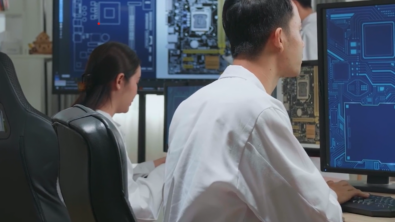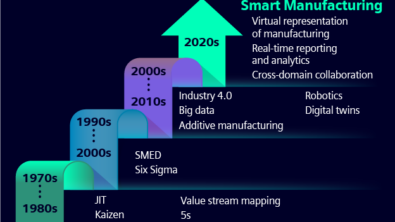What’s All the Buzz About Semiconductor Lifecycles?
Every thing has a lifecycle – bugs, trees, pets, and even humans.
And typically, each thing’s lifecycle mutually depends on one or more other things’ lifecycles.
A great example of this mutual dependency is the relationship between honeybees and flowers.
Honeybees feed on pollen. And flowers rely on honeybees to cross-pollinate their female plants. As a result, both survive and thrive.
So how does it work, exactly? Honeybees get their nectar from flowers which provide them with the energy they need. But while they dine from flower to flower, honeybees are cross-pollinating the flowers so they can flourish and become crops in the much larger ecosystem.
Multiple lifecycles form into an ecosystem which is a complex circle of interconnected lifecycles that are highly dependent on each other to achieve sustainability.
Usually, nature is flawless in orchestrating this complex ecosystem, but what if something unexpected happens and the honeybee disappears?
With the honeybees gone, the absence of cross-pollination would break the flower’s lifecycle, impacting the food supply of other plants and animals, which would begin to bring down the whole ecosystem. In fact, honeybees pollinate more than a third of our food crops. If the honeybee disappears, it would create a ripple effect across the ecosystem that would devastate our food supply.
But what do honeybees have to do with semiconductors? Answer: everything.
Like honeybees, semiconductors play a vital role in the ecosystem of products and devices we rely on daily to make our lives better.
The bees provide cross-pollination. Semiconductors provide technology like wireless communication we use every day.
Think of the parallel – it’s the bees’ ability to fly from flower to flower that enables the cross-pollination. And it’s the semiconductors’ wireless tech that allows us to have Internet of Things sharing information. The flowers’ pollen is equivalent to our information and communication.
Semiconductor lifecycles are critical to the lifecycle of the devices they’re used in. And when 2 or more of those devices are wirelessly connected they make up a lifecycle of lifecycles (Internet of Things) that touches every human lifecycle that relies on those devices forming a complex ecosystem for our use.
What keeps it all flowing? Honeybees and flowers have nature managing their individual lifecycles, but semiconductor lifecycles must rely on lifecycle management solutions.
Without effective lifecycle management solutions to manage all the different lifecycles from the inhouse development component to the components being supplied by a volatile supply chain, the absence of lifecycle management could break down a company’s ecosystem just like the disappearance of the honeybee can take down its ecosystem.
That’s why it is so important to have a formal lifecycle management solution for semiconductors.
When semiconductor companies don’t have an effective product lifecycle management, it puts the whole ecosystem of upper-level components at risk.
If the lack of adequate lifecycle management causes critical semiconductors to go missing for too long, our world pretty much stops and we’re back in the 1970s.
On the other hand, companies whose semiconductor products are orchestrated by a lifecycle management solution are equipped to identify lifecycle, quality, and supply chain issues, and have the visibility to navigate around the issues to prevent breaks in the ecosystem.
Without effective lifecycle management, semiconductor product lifecycles can become fragmented and disconnected, interrupting stakeholder collaboration, compromising security and traceability, eroding trust, causing unmanageable breaks in the ecosystem and delaying time to market.
Just as honeybees play a vital role in our ecosystem, ICs play an equally vital role in the ecosystems of products we use every day that make our lives better.
And just like the honeybee’s lifecycle must be managed with care, IC lifecycles need proper management as well to survive and thrive.
For more information on the essential management of your IC’s lifecycle and ecosystem, see: semiconductor-devices/lifecycle-management


